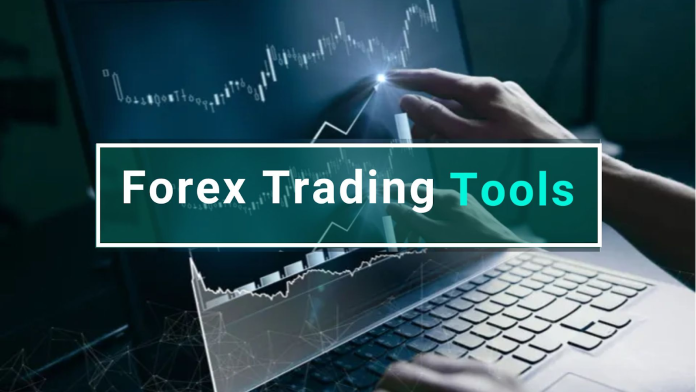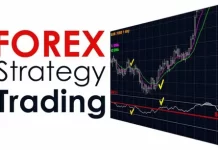Table of Contents
What Is Forex Risk Management?
In the forex market, where uncertainty is the only constant, traders must implement strong risk management techniques otherwise, the market fluctuations can devour traders’ hard-earned money. Risk management is a strategy involving multiple techniques and actions that a trader undertakes to prevent their account from losses.
But how exactly does a trader manage the risk? There are multiple ways to do that, such as determining the right position size and setting stop losses. However, risk management goes beyond these technical strategies. The initial step to risk management is practice, and there are demo accounts available with all the brokers where you can practise trading, devise new strategies and learn how to control your emotions because, eventually, all these things together will help you manage risks while trading a live account. We all know that traders often make wrong decisions under the influence of their emotions, increasing their risk in trading. Therefore, managing emotions is crucial in maintaining a steady and rational approach in the face of market fluctuations.
Top 5 Fundamentals Of Forex Risk Management
Risk Appetite: Your risk management practice should start with understanding your risk tolerance. As yourself- How much money am I okay to lose in a trade? Inquiring about your risk appetite should be the focal point of your strategy, especially when you trade highly volatile emerging market currencies. When there isn’t enough volatility for the currency you want to trade in, it may impede your ability to enter and exit positions at the desired price.
If you don’t determine your appetite for risk before entering a position, you may never know the appropriate time for exiting your position. There is also a possibility that you end up taking a bigger position size than you could manage. And if the trade, in such a scenario, turns against your speculation, it may hurt your ability to enter the next trade.
Consider this scenario: let’s assume that 50% of your trades materialise as profits. Sounds promising, doesn’t it? However, there is still a probability that the next 50% of trades will be losers. Therefore, you must have ample funds in your account to deal with a losing streak. Moreover, you should have a set risk tolerance so that even in a losing trade, you don’t lose more than you can afford to lose. A trusty rule of thumb suggests risking only between 1% and 3% of your account balance per trade.
Position size: The balance between protecting the account and seizing the opportunity lies in selecting the perfect position size. However, in order to choose the position/lot size, you must ascertain your stop placement. This means you should pinpoint the precise location where you want to exit the trade. Besides, you should also know your risk percentage and determine the pip value and lot size.
Leverage: Leverage is a powerful trading tool that allows traders to multiply their profits. Generally, traders with small accounts tend to use higher leverage in the hope that they can increase their capital quickly, but they often forget that higher returns also mean higher risk. To be consistently profitable over the long term, traders must use low leverage so that the risk is under their control. Even if high leverage tempts you, at least stick to low levels when just starting out. As you gain expertise and become better at your trading skill, you can slowly mark your way up to high leverage.
Emotional Control: Emotions like excitement, greed, fear, FOMO, or boredom can kill your trading. They will cloud your judgement in a way that you won’t be able to think logically and objectively. The consequences? You will never be able to make good trading decisions. One way to manage your emotions can be to maintain a trading journal. A journal is not just a logbook to keep track of your trades; you can make full use of it by adding details. For example, if your purpose is to control your emotions, then you can create a column in your trading journal where you mention how you felt during the trade, which emotions triggered you to exit the positions and how you felt after you came out from the trade. This will ultimately help you identify your negative emotions, and you can take appropriate measures to control them.
Trading Tools That Help With Risk Management
Economic Calendar: News Trading is a popular strategy for many retail traders, but it isn’t well-liked by brokers. The reason is the sharp volatility that news releases cause in the market. To protect themselves, brokers often limit access to some trading assets. This may be a nice technique for a broker, but traders don’t like it when they are prevented from taking advantage of certain market possibilities. Therefore, instead of this, brokers should offer access to economic calendars as they are really useful for traders in helping them with risk management. By identifying the key economic events scheduled to release, traders can measure their impact on the market and better plan their trades around those events. But the economic calendar should always be used from a reputable website.
Trading Calculators: Trading calculators help traders determine several values pertaining to their trades. There are different types of trading calculators available for traders using which they can calculate profits or losses, pip count, margin, position size, lot size, leverage and other aspects. Traders can choose the calculator(s) according to their requirements and simplify their trading.
Stop-loss: Stop-loss can work wonders by limiting your losses. When you apply a stop loss, you are giving your broker an instruction that you want your trade to be closed at a specific price. This means you can cap your maximum loss by placing a stop loss at a level beyond which you are not willing to lose. So, if the market moves against your position, you will be safe because you know the maximum loss you could incur on a particular trade. Therefore, make sure to place a stop loss as soon as you enter the trade.
Take profit: This is a tool that closes your trade when you reach a certain profit level. Take profit is an excellent tool for greedy traders who don’t lose their positions and try to squeeze as many pips as they can from a trade, ultimately putting themselves in a tricky situation where the market starts treading in the opposite direction. Instead of making huge profits, greedy traders end up making huge losses. Therefore, traders should always have their profit target clear in their minds. By using take profits in conjunction with stop loss orders,m traders can ensure that they will exit the position with a profit or loss they decided before entering a trade. This gives them an opportunity to manage their account more wisely than any other trader who doesn’t use these crucial risk management tools.
Currency Correlation: When we see a quote of a currency pair, we realise that currencies are priced in pairs. In simple words, the price of the currencies in pairs is linked to each other, known as Currency Correlation. There are two types of currency correlations: Positive and Negative. Positive means that the currencies are moving in the same direction, and negative means that currencies are moving in the opposite direction against each other. While positively correlated currencies can maximise profits, negatively correlated currencies can minimise risk. So, having an understanding of correlations can help you manage your risk effectively. You can also use a Currency correlation tool to find the correlation coefficient. The range of correlation coefficient goes from -1 to +1 where the -1 depicting the negative correlation while the +1 depicting the positive correlation. In case, the value is 0, then there is no correlation.
Final Remarks
As said by the legendary Paul Tudor Jones, “Don’t focus on making money; protect what you have.” Trading without risk management is not trading but gambling. And if you want to trade sensibly, you should never enter a trade without having a solid risk management strategy. Fortunately, we have numerous tools to make risk management easier. Therefore, it’s your duty to trade responsibly by making risk management an integral part of your trading strategy.








